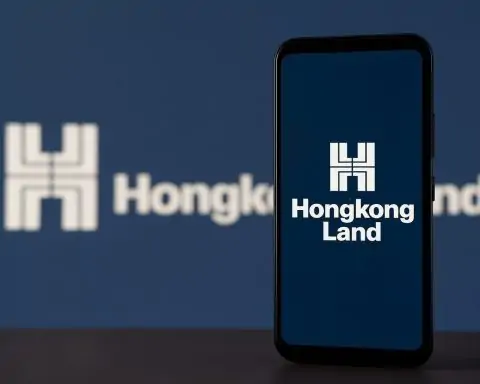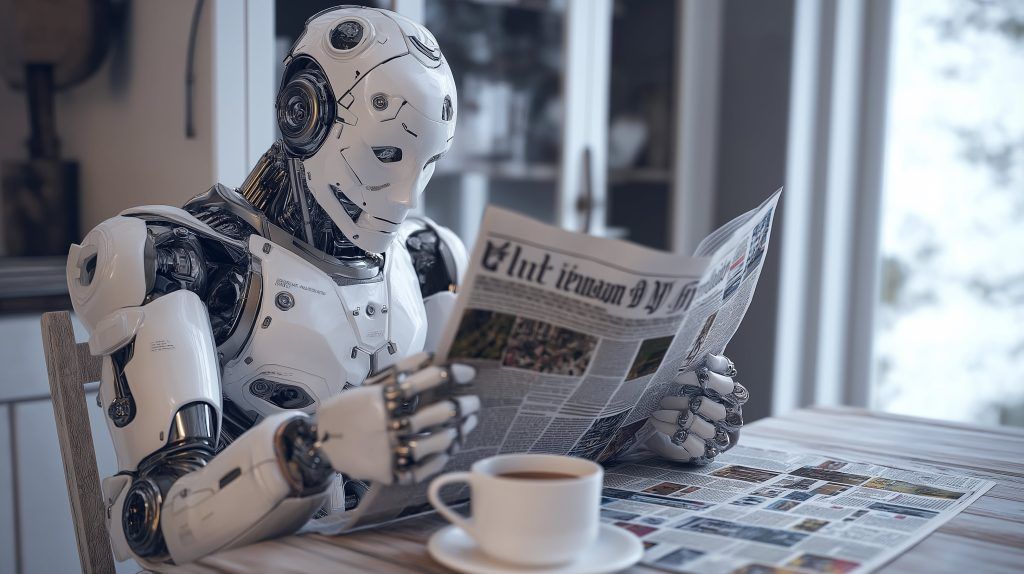Medicine & Health
- Historic “Three-Parent” IVF Success: Doctors in the UK announced the birth of eight healthy babies via a groundbreaking IVF procedure using DNA from three individuals, preventing them from inheriting incurable mitochondrial diseases [1]. The four boys and four girls (including one set of twins), born to seven women, show no signs of the mitochondrial disorders they were at risk of, providing long-awaited validation for the controversial technique first approved in 2015 [2]. “You are inevitably thinking it’s great for the patients and that is a relief,” said Professor Doug Turnbull, a member of the Newcastle University team that pioneered the procedure over two decades [3]. The results, reported in New England Journal of Medicine, indicate the donor mitochondria approach can effectively block disease transmission while producing healthy children [4] [5].
- Weight-Loss Drug Without Side Effects: A team led by Syracuse University scientists has found a way to trigger weight loss and improve blood sugar control without the nausea and vomiting caused by current GLP-1 drugs like Ozempic [6]. By targeting brain “support cells” (glial cells) instead of neurons, they developed a modified molecule called TDN that stimulates natural appetite-suppressing signals. In animal tests, TDN helped obese mice (and even vomiting-prone shrews) lose weight and enhanced their insulin response without causing the usual gastric side effects [7] [8]. “Instead of running a marathon from the very beginning like current drugs do, our approach [starts] the race halfway through, reducing the unpleasant side effects many people experience,” explained Robert Doyle, the lead researcher and medicinal chemist [9]. The team has launched a startup to develop this therapy and aims to begin human trials by 2026–2027 [10].
Space & Astronomy
- Record-Breaking Black Hole Weighs In: The “Cosmic Horseshoe” Einstein ring formed by a distant galaxy’s light being warped by a foreground galaxy’s gravity. Astronomers discovered an ultramassive black hole about 36 billion times the Sun’s mass in the galaxy creating this perfect gravitational lens [11]. This behemoth, potentially the most massive black hole ever found, resides 5 billion light-years away at the center of the aptly nicknamed Cosmic Horseshoe galaxy. The team measured its mass by combining traditional stellar motion data with the distortions it causes in the Einstein ring – a novel technique that allowed probing such a distant giant [12]. “This is amongst the top 10 most massive black holes ever discovered, and quite possibly the most massive,” said Professor Thomas Collett of the University of Portsmouth, adding that their new lensing-based method provides much more certainty in the mass estimate [13]. The finding, published in Monthly Notices of the RAS, pushes the known limits of black hole size and will help scientists understand the link between galaxies and their central black holes [14] [15].
- Closest Sun-Like Star May Have a Planet: Using NASA’s James Webb Space Telescope, scientists found strong evidence of a new exoplanet orbiting Alpha Centauri A, the nearest Sun-like star at just 4 light-years from Earth [16]. Webb’s mid-infrared instrument snapped an image of the Alpha Centauri system using a special coronagraph mask to block the star’s glare, revealing a faint object roughly 2 AU (twice Earth’s distance from the Sun) from Alpha Centauri A [17] [18]. The planet candidate appears to be a gas giant, about the mass of Saturn, and lies in the star’s habitable zone – though being a gassy world, it “wouldn’t be able to support life as we know it,” scientists caution [19]. Still, the discovery is exciting: “With this system being so close to us, any exoplanets found would offer our best opportunity to collect data on planetary systems other than our own,” said Charles Beichman, executive director of NASA’s Exoplanet Science Institute, in an official statement [20]. If confirmed by further observations (papers on the finding are in press at Astrophysical Journal Letters [21]), this would be the first planet ever directly imaged around a star so similar to our Sun [22] [23].
Climate & Environment
- “Stable” Glacier Starts Rapid Melt: Perito Moreno Glacier in Patagonia, long thought relatively stable, is now retreating rapidly. New measurements show Argentina’s iconic Perito Moreno Glacier is undergoing its “most substantial retreat in the past century,” according to a study in Communications Earth & Environment [24]. For decades this glacier was one of the few not visibly shrinking, but scientists report it has recently begun detaching from the bedrock and is shedding ice at an accelerating pace, indicating a delayed yet dramatic response to warming climate conditions [25]. They project it will retreat several kilometers in the coming years as the balance of snowfall vs. melt has tipped. “We believe that the retreat we are seeing now… is because it hasn’t been climatically stable for over a decade,” said Moritz Koch, a glaciologist and study co-author, noting that the glacier’s apparent stability was masking an imbalance that is only now becoming evident [26]. Experts say the findings refute a common climate-skeptic argument (that Perito Moreno’s growth meant climate change wasn’t global) and warn that even “stable” ice can succumb once a tipping point is reached [27] [28].
- Global Heat Nears Threshold: The world just experienced its third-hottest July on record, according to EU’s Copernicus Climate Change Service [29]. The average global temperature in July 2025 reached 16.68 °C, about 0.45 °C above the 1991–2020 norm, and only slightly cooler than the record-setting Julys of 2023 and 2024 [30]. Notably, the 12-month period from August 2024 through July 2025 was 1.53 °C hotter than the pre-industrial average, temporarily breaching the 1.5 °C warming threshold of the Paris Agreement [31]. “Two years after the hottest July on record, the recent streak of global temperature records is over – for now,” said Carlo Buontempo, director of Copernicus, in a press release [32]. “But this doesn’t mean climate change has stopped. We continued to witness the effects of a warming world in events such as extreme heat and catastrophic floods in July.” [33] Climate researchers emphasize that while a single month above 1.5 °C does not mean the target is permanently overshot, it highlights the trend toward more frequent record heat and the urgency of cutting greenhouse gas emissions [34] [35].
Physics & Materials Science
- Gold Defies Melting Point: In a feat of extreme physics, researchers superheated a tiny gold sample to over 19,000 K – more than 14 times gold’s normal melting point – without melting it [36]. Using an ultra-fast laser pulse at SLAC’s Linac Coherent Light Source (LCLS), the team zapped a gold foil for mere quadrillionths of a second, heating it so rapidly that the metal’s atoms didn’t have time to disorganize into a liquid [37] [38]. This experiment shattered a long-standing theoretical limit known as the “entropy catastrophe,” which held that no solid could remain intact above roughly 3× its melting temperature [39]. “This is possibly the hottest crystalline material ever recorded,” said Thomas White, a University of Nevada physicist and lead author on the study [40]. He admitted they never expected gold to withstand a 14× melting point jump: “I wasn’t expecting a fourteen-fold temperature increase” without melting, White noted [41]. The results, published in Nature, not only overturn textbook theory but also demonstrate a new method to study matter in ultrahot, dense states [42]. Scientists say the ability to probe solids at such extreme temperatures opens a door to researching fusion reactor materials and the conditions inside planetary cores, using facilities like LCLS and Europe’s XFEL [43] [44].
Technology & Innovation
- Quantum ‘Superatoms’ for Computing: Chemists have created tiny gold nanoclusters that behave like trapped atoms, potentially revolutionizing quantum computing by offering a scalable new hardware platform [45] [46]. In two papers (in ACS Central Science and J. Phys. Chem. Lett.), a Penn State–Colorado State team showed that gold clusters just a few atoms wide exhibit the same electron spin characteristics as the best current quantum bits (ions trapped in a gas) [47]. Crucially, the spin properties of these gold “superatoms” can be tuned by attaching different ligands (molecules) to their surface, which the team demonstrated by achieving spin polarizations up to ~40% in certain configurations [48] [49]. “For the first time, we show that gold nanoclusters have the same key spin properties as the current state-of-the-art [quantum information] systems,” said Ken Knappenberger, the study’s senior author and a professor of chemistry at Penn State [50]. Because these nanoclusters can be synthesized in large quantities and their quantum behavior adjusted chemically, Knappenberger calls the work a “promising proof-of-concept” that could “support a variety of quantum applications” in the future [51] [52].
Sources: The above summaries are based on reports and press releases from reputable outlets and journals, including The Guardian [53] [54], Science [55] [56], NASA [57], ScienceDaily/RAS [58] [59], Euronews (AP) [60] [61], Reuters [62] [63], Nature [64] [65], and university press releases [66] [67]. Each story’s details and quotes are drawn from the original research publications or official statements by experts involved.
References
1. www.theguardian.com, 2. www.theguardian.com, 3. www.theguardian.com, 4. www.theguardian.com, 5. www.theguardian.com, 6. www.sciencedaily.com, 7. www.sciencedaily.com, 8. www.sciencedaily.com, 9. www.sciencedaily.com, 10. www.sciencedaily.com, 11. www.sciencedaily.com, 12. www.sciencedaily.com, 13. www.sciencedaily.com, 14. www.sciencedaily.com, 15. www.sciencedaily.com, 16. www.space.com, 17. www.space.com, 18. www.space.com, 19. www.space.com, 20. www.space.com, 21. science.nasa.gov, 22. www.space.com, 23. www.space.com, 24. www.euronews.com, 25. www.euronews.com, 26. www.euronews.com, 27. www.euronews.com, 28. www.euronews.com, 29. www.reuters.com, 30. www.reuters.com, 31. www.reuters.com, 32. www.reuters.com, 33. www.reuters.com, 34. www.reuters.com, 35. www.reuters.com, 36. www.sciencedaily.com, 37. www.sciencedaily.com, 38. www.sciencedaily.com, 39. www.sciencedaily.com, 40. www.sciencedaily.com, 41. www.sciencedaily.com, 42. www.sciencedaily.com, 43. www.sciencedaily.com, 44. www.sciencedaily.com, 45. www.sciencedaily.com, 46. www.sciencedaily.com, 47. www.sciencedaily.com, 48. www.sciencedaily.com, 49. www.sciencedaily.com, 50. www.sciencedaily.com, 51. www.sciencedaily.com, 52. www.sciencedaily.com, 53. www.theguardian.com, 54. www.theguardian.com, 55. www.sciencedaily.com, 56. www.sciencedaily.com, 57. www.space.com, 58. www.sciencedaily.com, 59. www.sciencedaily.com, 60. www.euronews.com, 61. www.euronews.com, 62. www.reuters.com, 63. www.reuters.com, 64. www.sciencedaily.com, 65. www.sciencedaily.com, 66. www.sciencedaily.com, 67. www.sciencedaily.com










